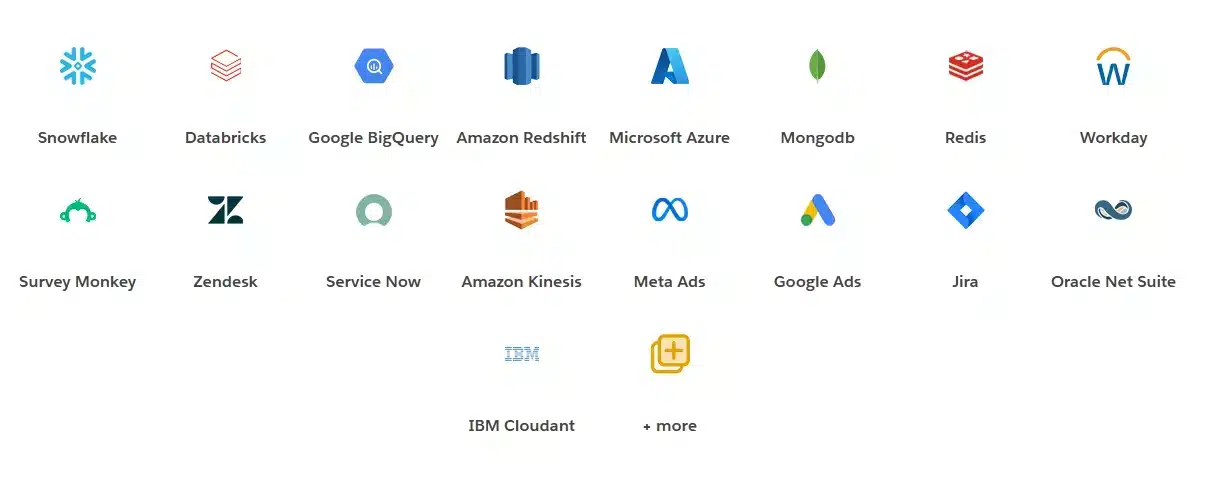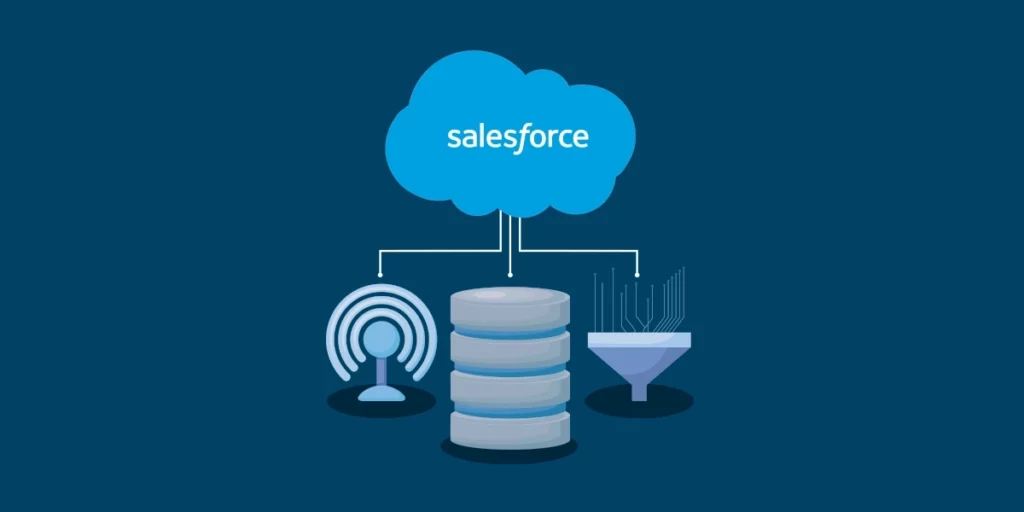The explosion of data volumes presents a major challenge for companies: transforming this vast amount of information into a genuine performance booster. Data Cloud integration arises as the strategic solution to effectively orchestrate this growing resource of information. Learn how to implement it efficiently.
Data integration, a growing challenge
By 2028, global data creation is projected to reach 394 zettabytes (equivalent to 397,000,000,000,000,000,000,000 bytes of data). With this exponential increase in enterprise data volumes, it becomes imperative to rethink the approach to information management.
The data produced is highly diverse. It originates from various sources (such as data lakes, data warehouses, relational or non-relational databases, etc.), and most of the available data is unstructured. The consequence? An inability to harness these billions of information pieces effectively.
This is where Data Cloud integration proves invaluable. Besides maximizing the analytical potential of data, it ensures the coherence and reliability of information across the enterprise. Beyond simple technical consolidation, this integration strategy acts as a genuine catalyst for digital transformation. It facilitates advanced analyses and intelligent data use through AI technologies.
Salesforce Data Cloud, the platform that simplifies data integration
At the core of the Salesforce ecosystem, Data Cloud revolutionizes the unified management of informational resources within the company. This innovative solution is distinguished by its capacity to orchestrate and centralize data flows from an extensive network of over 200 interconnected systems and applications.
With its native architecture, Salesforce seamlessly synchronizes data from multiple sources, be they from specialized warehouses or large data lakes. This groundbreaking approach to Data Cloud integration enables organizations to construct a comprehensive and precise understanding of their customer base.
By blending technological flexibility with advanced interoperability, the data platform sets a new benchmark in democratizing data access. Whether for human teams or artificial intelligence solutions, everyone can fully leverage this unified resource of information.
4 steps for integration on Data Cloud
1 - Import data
The initial data integration into Data Cloud is founded on an essential import phase, facilitated by a particularly flexible technological infrastructure.
Thanks to the various connectors available, Salesforce is highly adaptable regarding accepted data sources. Snowflake, DataBricks, Microsoft Azure, Google Cloud, Amazon S3… the platform excels in its ability to forge connections with existing digital ecosystems. This allows you to consolidate your informational resource without technical friction.

2 - Choose the connection mode
In addition to importing, it is crucial to select the connection mode that best meets your organization’s specific needs. Depending on your objectives and technical constraints, you have three distinct approaches to choose from:
- Sequential processing: this orchestrated systematic method ensures the planned transfer of data through ordered sequences. By doing so, sequential processing guarantees the integrity and consistency of information during its migration to the platform.
- Dynamic flow: this allows for smooth and continuous management of incoming data, optimizing data processing for immediate use within the Data Cloud ecosystem.
- Instant synchronization: this option ensures constant data updates. Companies can then utilize real-time information to deploy highly targeted personalization strategies.
Choosing the right connection mode is a determining factor in the success of your data integration strategy.
3 - Activate structured and unstructured data
Once the data is imported, Data Cloud transforms raw information into strategic and exploitable resources. It achieves this through sophisticated processing mechanisms that enhance both structured and unstructured data within a unified ecosystem.
Organizations can now fully leverage their digital resources, notably to drive personalization and automation initiatives or even advancements in artificial intelligence.
4 - Share your data
Data Cloud Integration extends beyond importing data into CRMs. It also encompasses distribution channels. Enhanced data can be exported to strategic digital marketing and advanced analysis platforms. Thus, the unified information reservoir becomes a true hub for exchange.
This multidirectional approach to data sharing exponentially increases the value of informational resources by concurrently fueling various growth levers within the organization.
Best practices with Data Cloud Integration
Data mapping
Data Cloud Integration transcends mere technical migration to the cloud. It necessitates thoughtful consideration of regulatory issues. Data mapping emerges as a fundamental prerequisite.
It begins with an in-depth analysis of existing informational resources and the strategic objectives being targeted.
Following this analysis, the mapping outlines the information flows. This process not only identifies correlations between different data sources but also anticipates necessary transformations to ensure harmonious integration.
Beyond technical aspects, this methodical mapping approach acts as a safeguard against traditional pitfalls in digital transformation projects. For instance, avoiding the illusion of “lift and shift,” which involves simply transposing existing systems without rethinking their architecture.

Data quality
Data quality is a fundamental pillar of any effective Data Cloud integration strategy. It extends beyond technical verification to a systematic and automated approach to maintaining the integrity of informational resources. This aspect is crucial because even a minor inaccuracy can undermine the reliability of the entire system and, consequently, the validity of any resultant analyses.
Fortunately, Salesforce quality assurance solutions now allow for large-scale surveillance through sophisticated mechanisms. Notably, automated validation protocols detect anomalies before integration, standardize collection processes among different teams, and facilitate error correction without complex technical intervention.
This proactive approach to data quality thus serves as an essential bulwark against the gradual deterioration of a company’s informational capital.
Zero copy integration
Zero copy integration addresses a significant challenge for modern companies: the need to utilize dispersed data without multiplying copies and intricate synchronizations. This pioneering solution enables direct interaction with information stored in various environments, whether external data warehouses or third-party platforms, while keeping it at its source.
With zero copy, gone are the traditional constraints associated with data duplication (such as creating and maintaining extraction pipelines).
Moreover, this approach allows for the immediate use of informational resources for advanced use cases, particularly in artificial intelligence.










